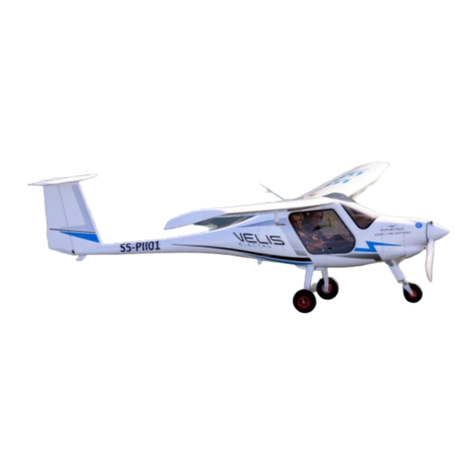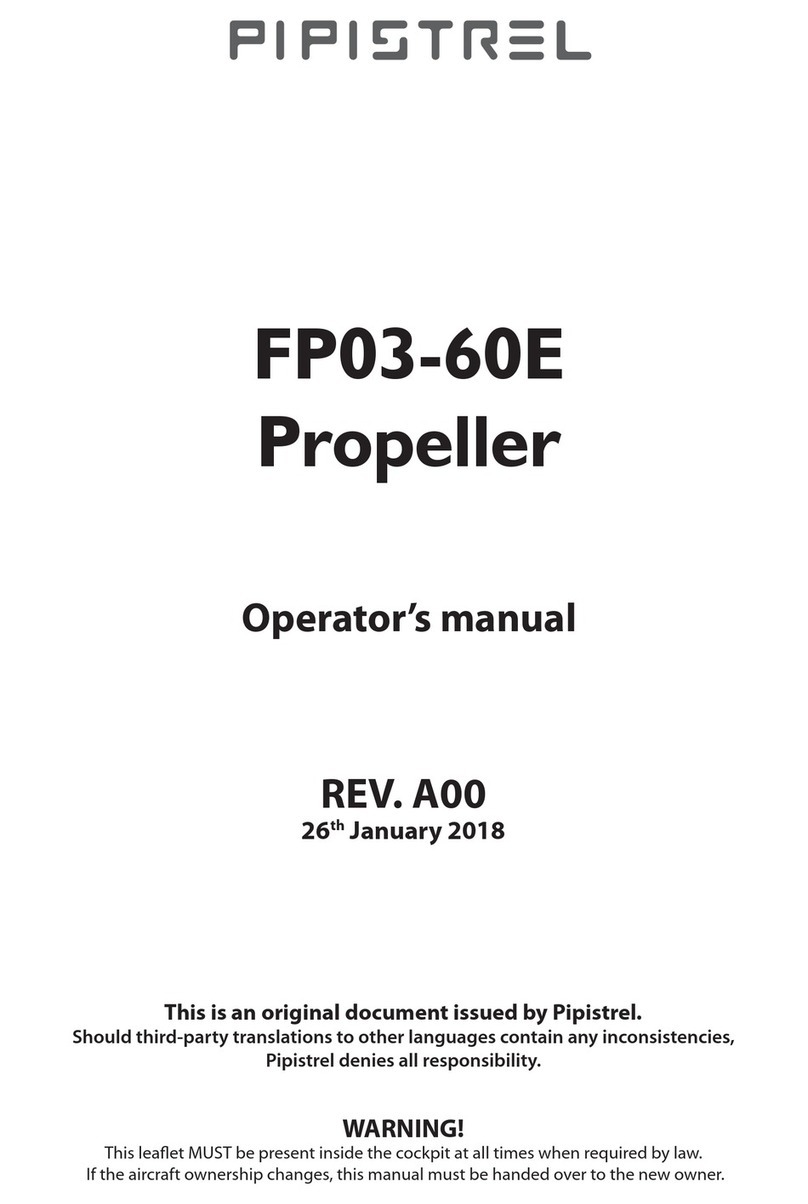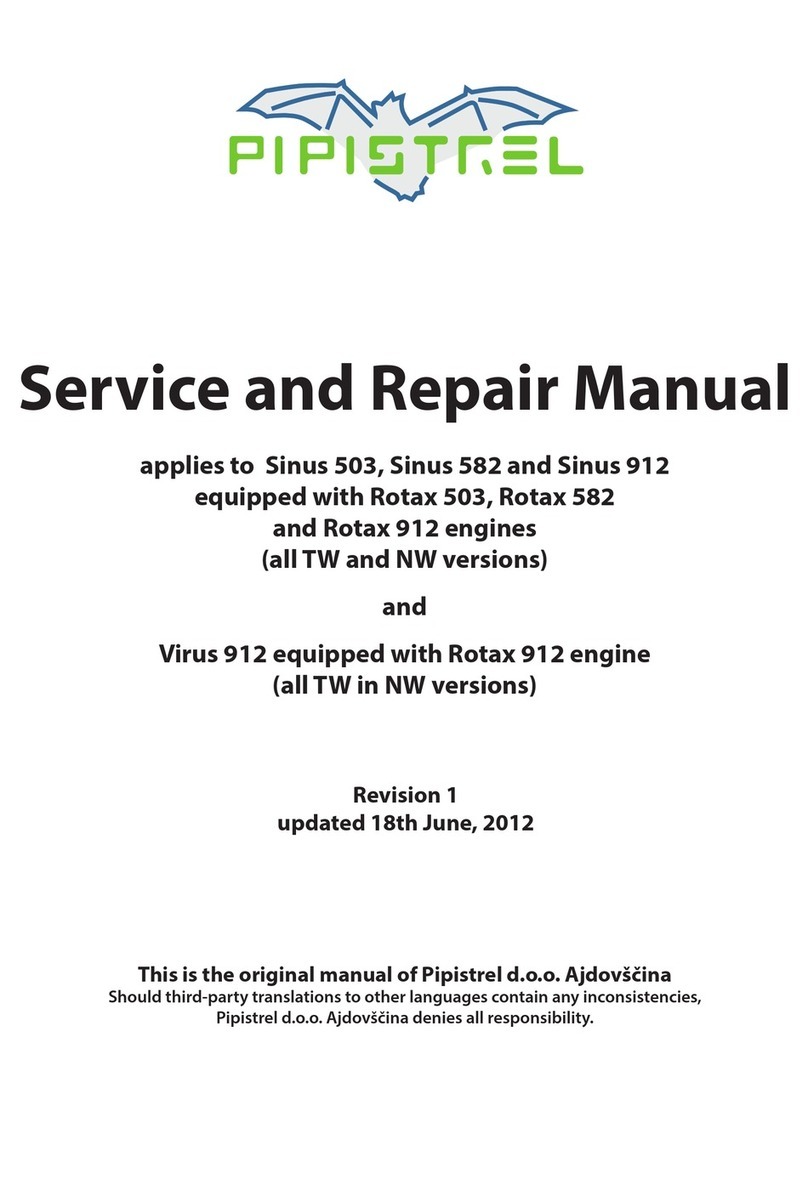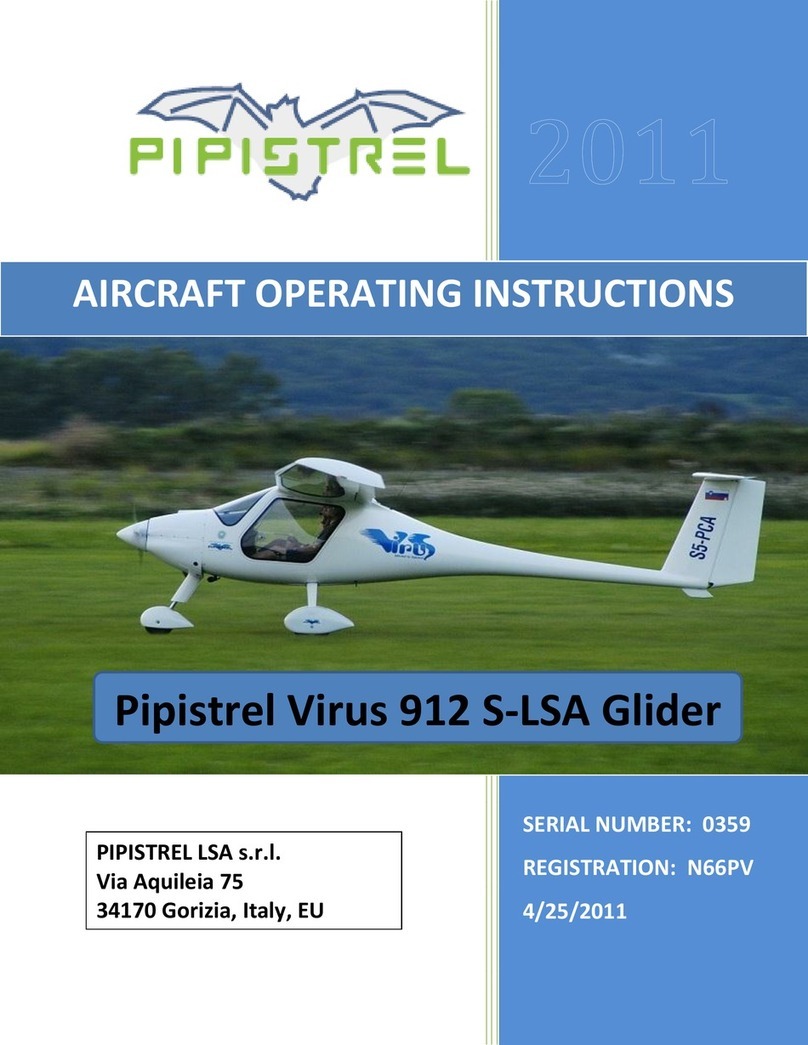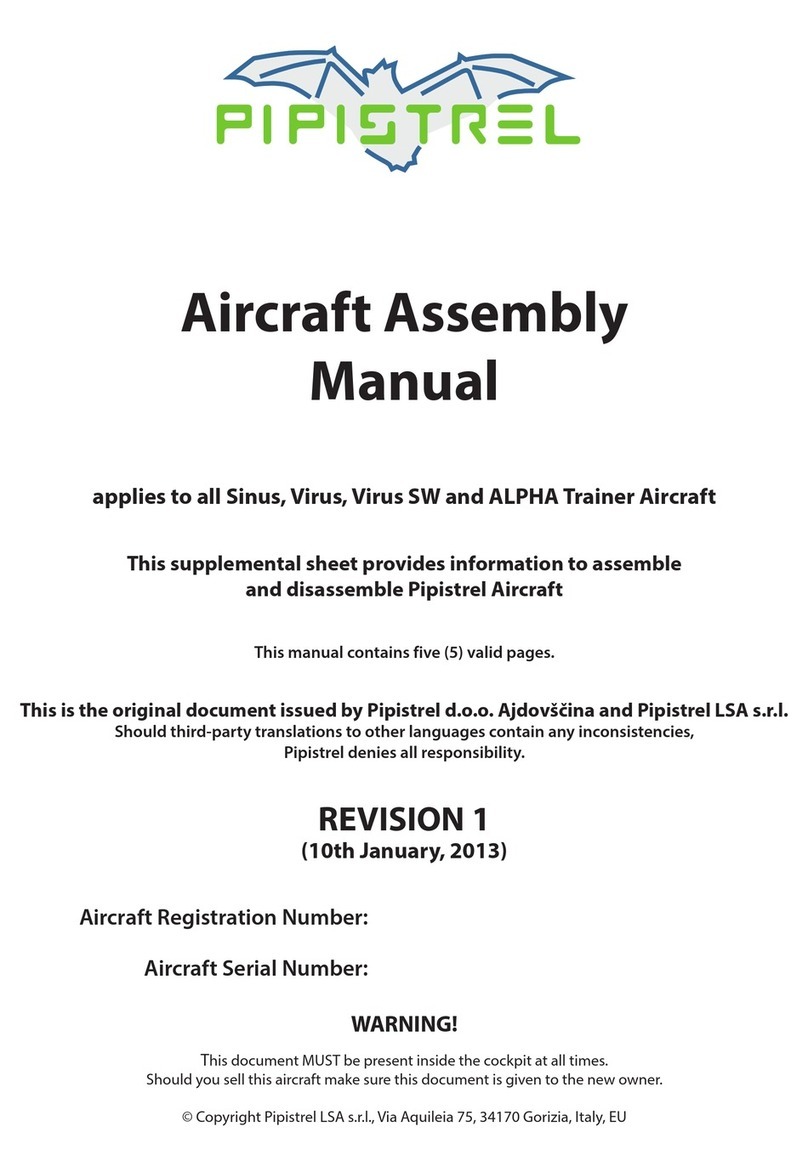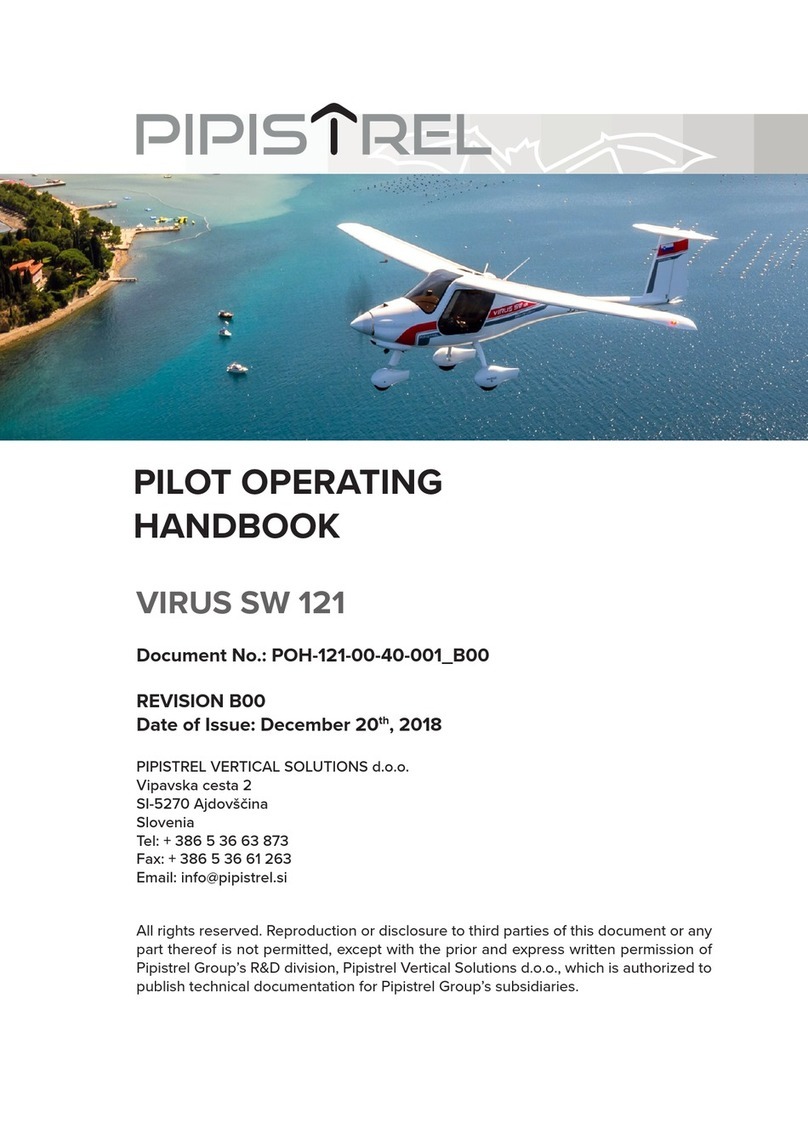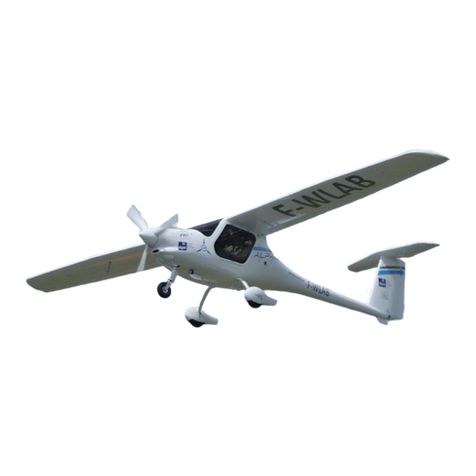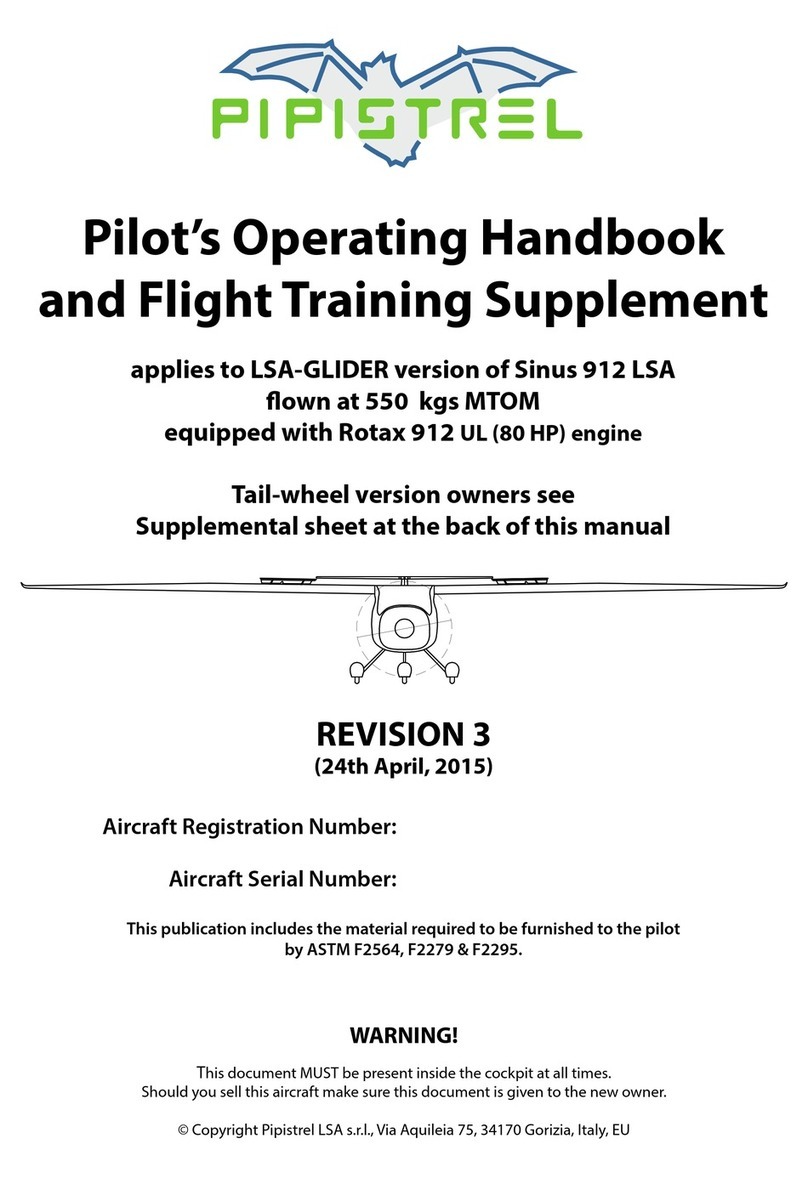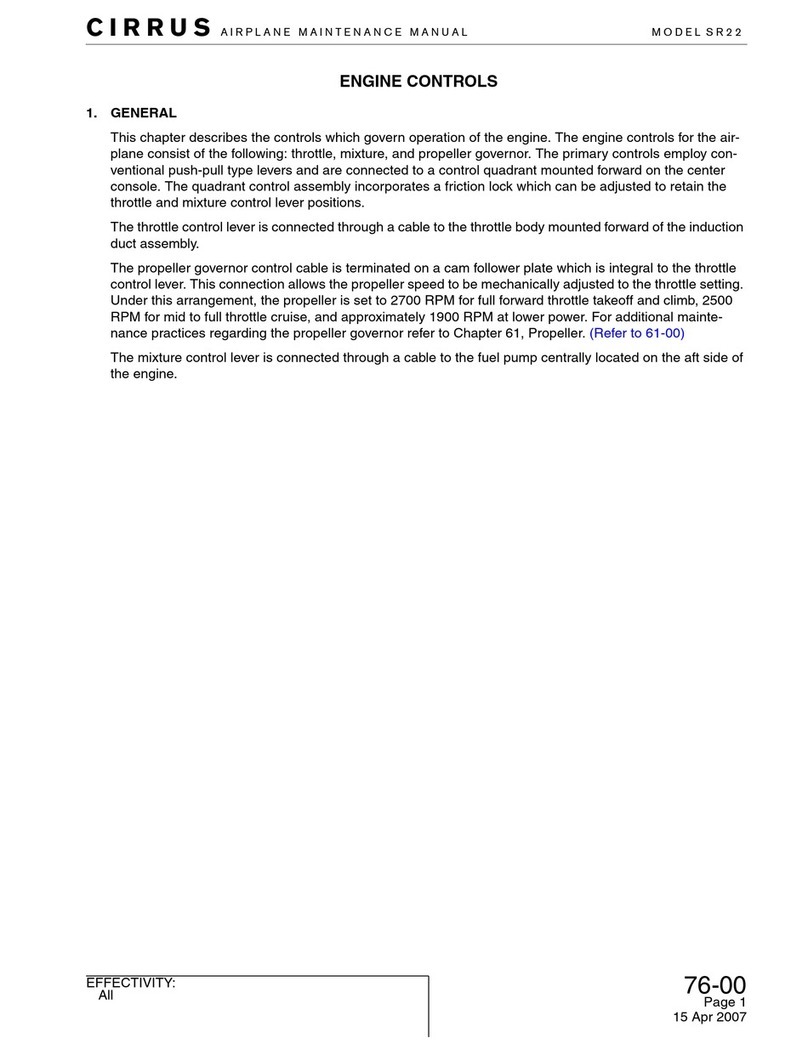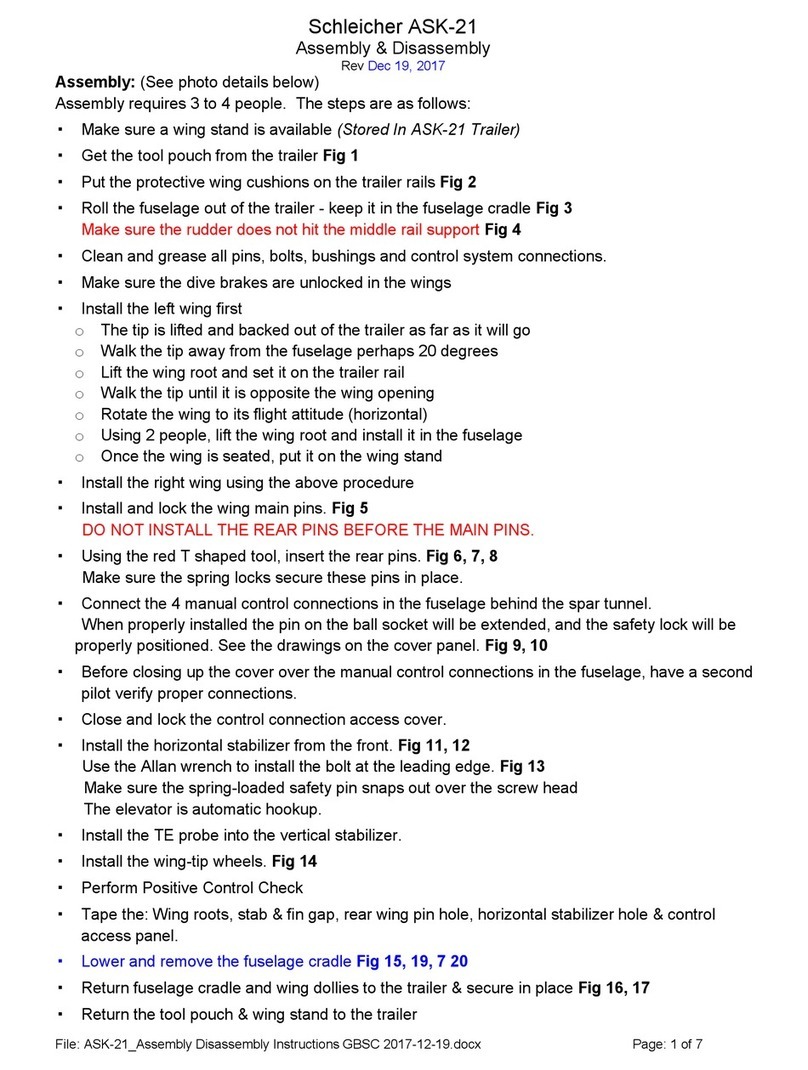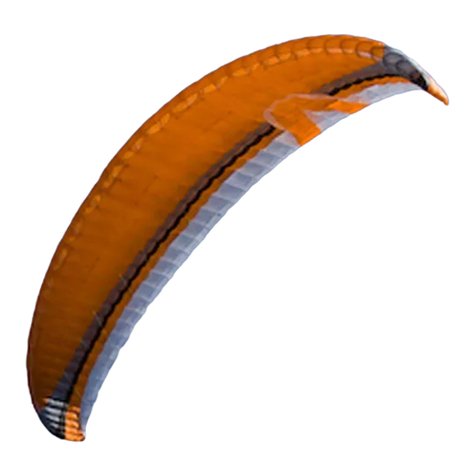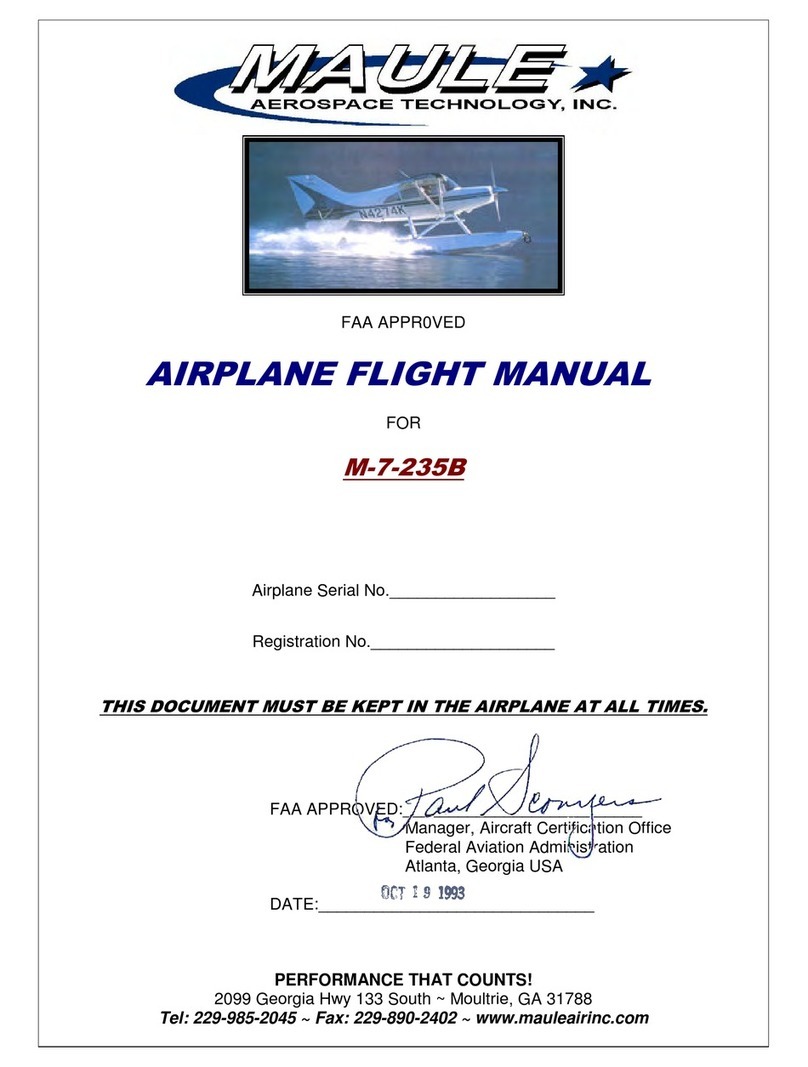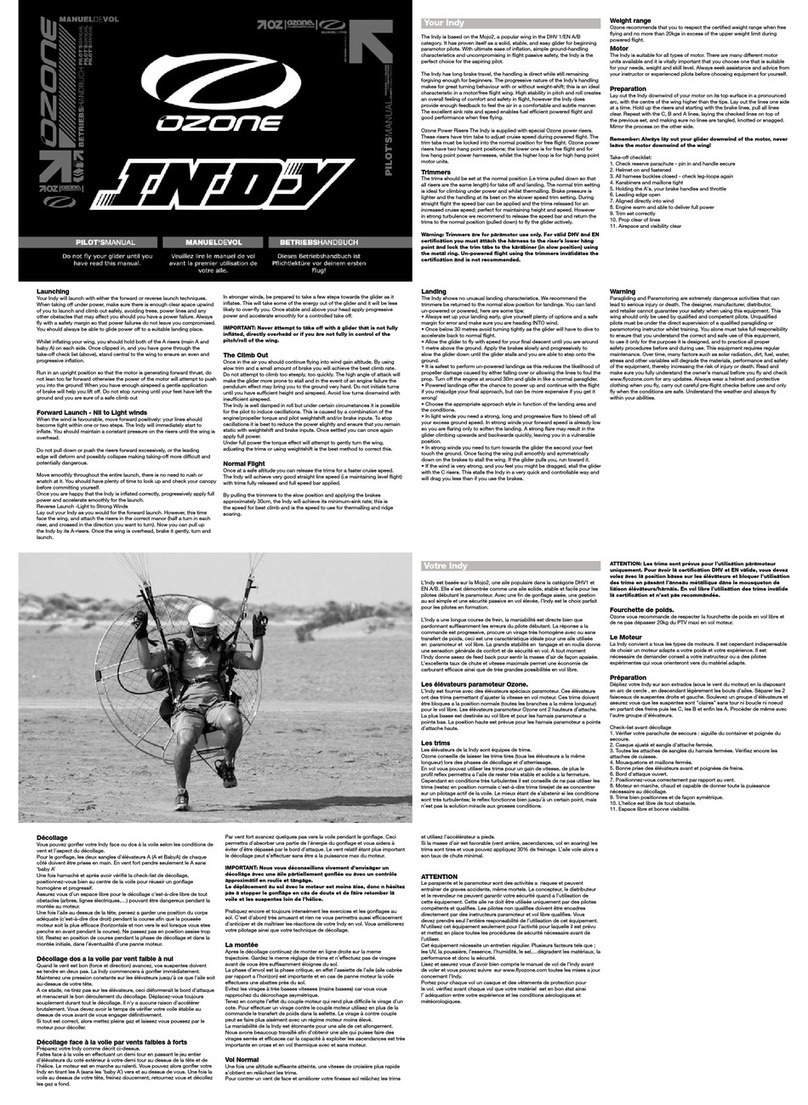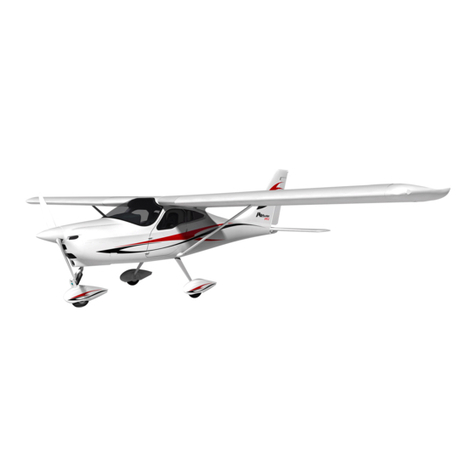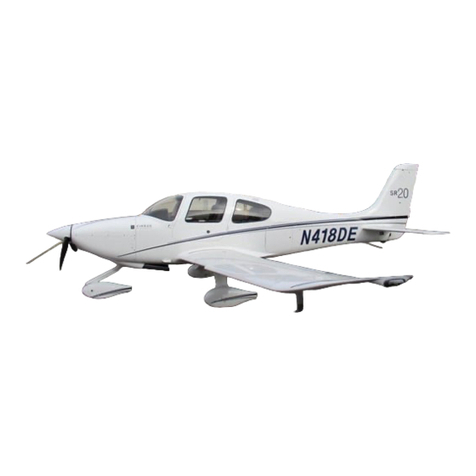Introduction
This manual contains all information needed
for appropriate and safe use of Virus 912.
IT IS MANDATORY TO CAREFULLY
STUDY THIS MANUAL PRIOR TO USE
OF AIRCRAFT
In case of aircraft damage or people injury
resulting form disobeying instructions in the
manual PIPISTREL d.o.o. denies all responsi-
bility.
All text, design, layout and graphics are
owned by PIPISTREL d.o.o. Therefore this
manual and any of its contents may not be
copied or distributed in any manner (elec-
tronic, web or printed) without the prior con-
sent of PIPISTREL d.o.o.
Certification basis
PIPISTREL d.o.o possesses the manufacturing
licence issued by URSZP (ULN no.: P-03) of
Virus ultralight aircraft.
Virus is certied at URSZP according to the
standards of the Republic of Slovenia and the
Type Certicate.
no.__AT/ULN 02__ dated: 09.07.1999
as an Ultralight aircraft.
(see attachments for copies of certicates)
Notes and remarks
Safety denitions used in the manual:
WARNING! Disregarding the following instructions leads to severe deterioration of ight
safety and hazardous situations, including such resulting in injury and loss of life.
CAUTION! Disregarding the following instructions leads to serious deterioration of ight
safety.
Technical data
PROPORTIONS Model 912
wing span 12,46 m
length 6,6 m
height 1,85 m
wing surface 11,0 m2
vertical n surface 1,1 m2
horizontal stabilizer and elevator surface 1,63 m2
aspect ratio 13,1
positive ap deection (down) 9 °, 18 °
negative ap deection (up) 5°
centre of gravity (MAC) 20% - 38%
General
